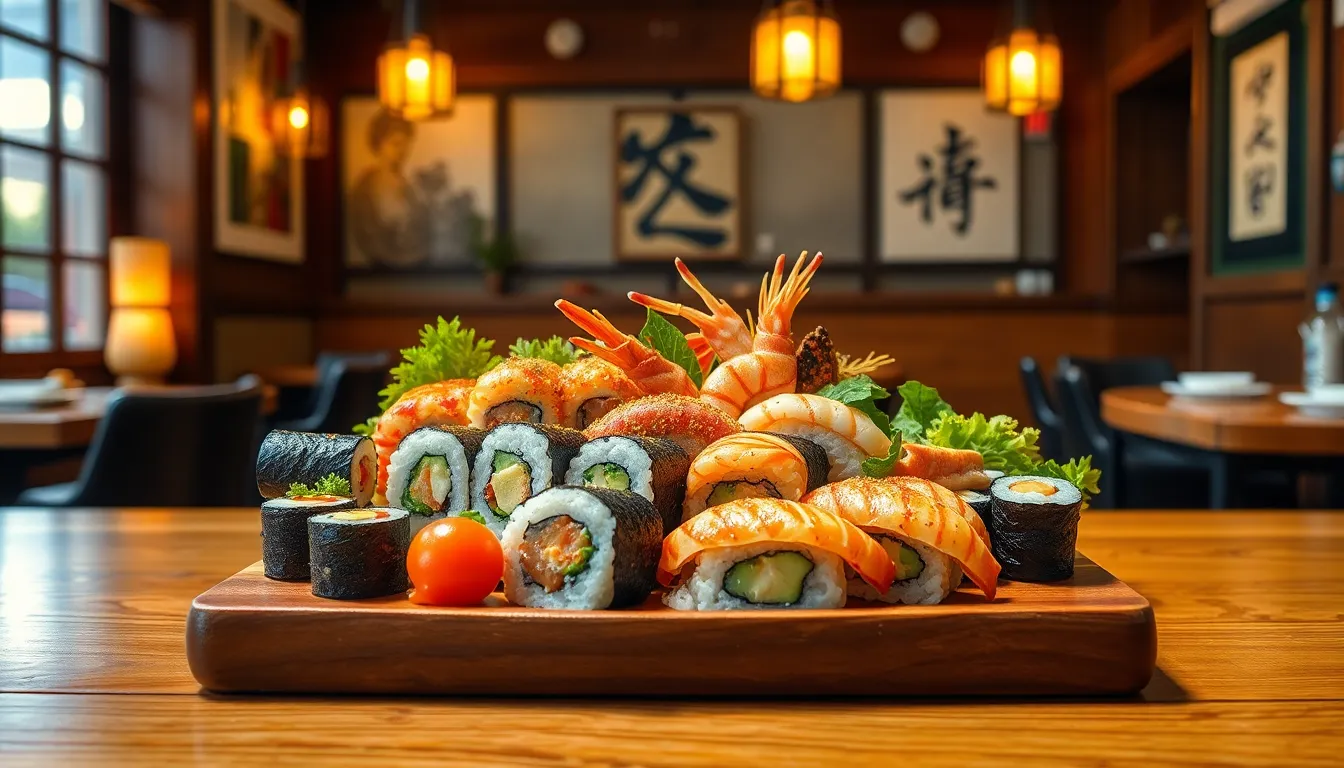Pregnancy is a wild ride filled with cravings and aversions, but what happens when sushi enters the picture? For many, the thought of indulging in those delightful rolls might spark a debate that rivals the best of food fights. Can a pregnant woman enjoy sushi without turning her cravings into a culinary conundrum?
Table of Contents
ToggleUnderstanding Sushi Pregnancy
Sushi pregnancy explores the nuances of consuming sushi during pregnancy. Expectant mothers often crave sushi, leading to questions about its safety and potential risks.
What Is Sushi Pregnancy?
Sushi pregnancy refers to the considerations surrounding sushi consumption during pregnancy. Expectant mothers experience cravings for different foods, sushi often being one of them. Sushi includes various ingredients, such as raw fish, vegetables, and rice, contributing to its appeal. Understanding what constitutes sushi and its components is vital for pregnant women. Not all sushi is created equal; many dishes incorporate cooked seafood options or vegetarian variations that may be safer.
Possible Risks Involved
Potential risks involve the consumption of raw fish during pregnancy. Raw fish can harbor harmful bacteria and parasites, which might pose health threats to both mother and child. Some types of fish contain high mercury levels, potentially affecting fetal development. Pregnant women need to consider these dangers, particularly in raw sushi. Cooking seafood eliminates many risks, making cooked sushi a safer option. It’s important to consult healthcare professionals before making dietary choices during pregnancy.
Types of Sushi During Pregnancy

Expectant mothers can enjoy various types of sushi during pregnancy, but certain options carry more risks than others. Understanding these options is crucial for making informed choices.
Raw Sushi vs. Cooked Sushi
Raw sushi poses significant risks during pregnancy due to potential exposure to harmful bacteria, parasites, and high mercury levels. Cooked sushi, on the other hand, offers a safer alternative as it eliminates pathogens linked to raw seafood. Examples of cooked sushi include eel (unagi), shrimp (ebi), and tempura rolls. Many women prefer these selections since they satisfy cravings while minimizing health concerns. Restaurants often label cooked options clearly, making them easier to identify. Pregnant women can indulge without compromising safety when they choose cooked varieties.
Safe Sushi Choices
Several sushi options are safe for pregnant women. Cooked seafood, vegetables, and rice-based rolls provide delicious alternatives. For instance, avocado rolls and cucumber rolls contain healthy ingredients without the risks associated with raw fish. Additionally, sushi featuring cooked crab (kani) is a popular choice that offers a flavorful experience. Many establishments also create unique rolls with cooked elements, ensuring plenty of options are available. Consulting with servers can help ensure selections align with dietary needs while enjoying sushi safely during pregnancy.
Nutritional Considerations
Understanding the nutritional aspects of sushi is crucial for pregnant women. Choosing the right ingredients can enhance health benefits while minimizing risks.
Benefits of Sushi Ingredients
Fresh vegetables like avocado and cucumber contribute valuable fiber and vitamins. Seaweed used in sushi contains essential minerals, particularly iodine which supports fetal brain development. Cooked seafood provides protein without the risks associated with raw options. Additionally, ingredients like ginger can aid digestion, an important consideration during pregnancy. Seeking out sushi that emphasizes these safe ingredients supports overall nutrition during this pivotal time.
Essential Nutrients for Pregnant Women
Pregnant women require various nutrients to support their health and fetal development. Omega-3 fatty acids found in certain fish play a vital role in brain and eye development. Folate is another important nutrient, aiding in cellular growth, often found in rice and vegetables used in sushi. Iron is crucial for preventing anemia and can be sourced from cooked seafood. Finally, adequate hydration is important, and sushi can encourage fluid intake through its watery elements. Emphasizing these nutrients in sushi choices enhances the dietary experience during pregnancy.
Recommendations for Pregnant Women
Expectant mothers can enjoy sushi by making informed choices. Safe options exist that minimize risks while satisfying cravings.
How to Enjoy Sushi Safely
Choosing cooked sushi varieties guarantees safety for expectant mothers. Tempura rolls, eel, and shrimp are excellent options that eliminate the risks associated with raw fish. Vegetable rolls like avocado and cucumber also provide nutritious flavors without health concerns. Asking restaurant staff about preparation methods is critical. This ensures that the chosen sushi aligns with dietary restrictions and safety measures.
Consulting Healthcare Professionals
Consulting a healthcare professional adds an extra layer of safety. Doctors or nutritionists can provide tailored advice regarding sushi consumption during pregnancy. They can also address specific health concerns and recommend dietary choices that promote fetal development. Keeping an open line of communication with healthcare providers enhances overall dietary security. It ensures that the nutritional needs of both mother and baby are met effectively.
Navigating sushi cravings during pregnancy requires careful consideration. Expectant mothers can still enjoy sushi by opting for cooked varieties and vegetable rolls that provide essential nutrients without the associated risks of raw fish. It’s crucial to prioritize safety by consulting healthcare professionals and restaurant staff to ensure dietary choices align with health needs. By making informed decisions, pregnant women can satisfy their cravings while supporting their own health and that of their developing baby. Enjoying sushi responsibly can be part of a balanced diet during this special time.




